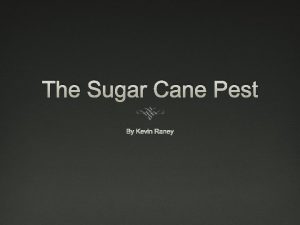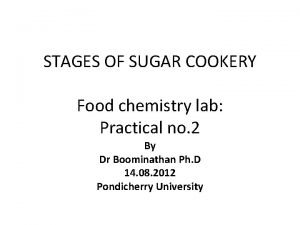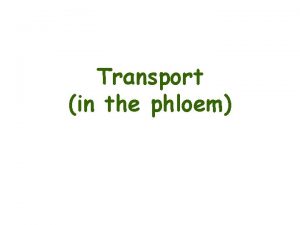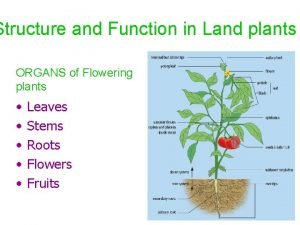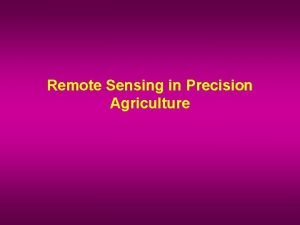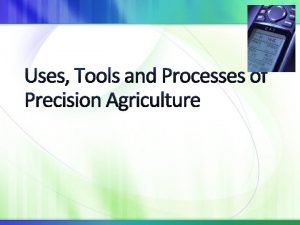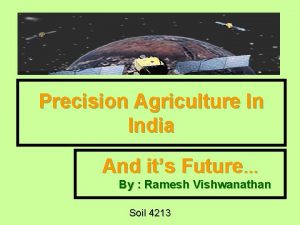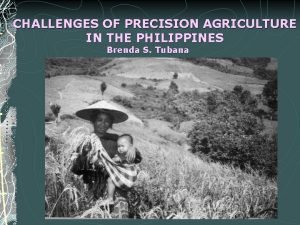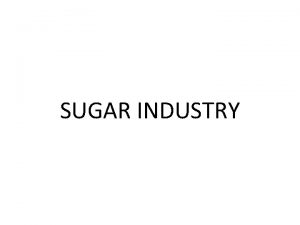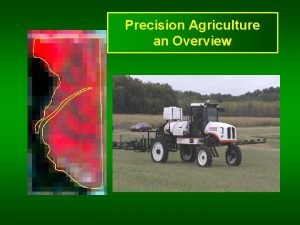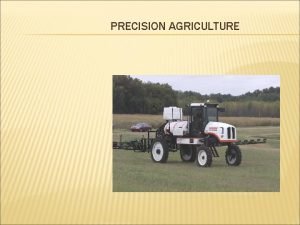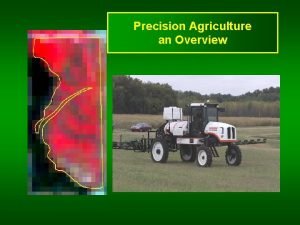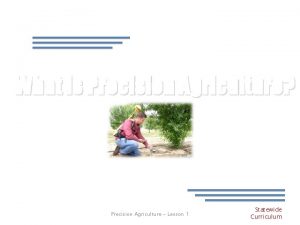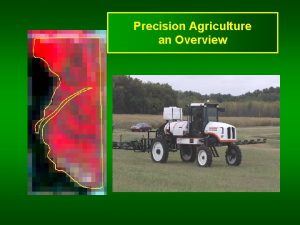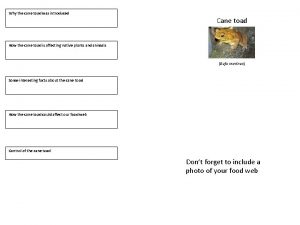Precision Agriculture in Sugar Cane Production Josh Lofton













- Slides: 13

Precision Agriculture in Sugar Cane Production Josh Lofton 4/24/09

Intro into sugar cane • First mention of sugar cane in history was from Alexander in 326 BC in India • All sugar cane grown today are hybrids • US is 9 th largest producer of sugar cane with 28 million tons • Traditionally planted and grown for 3 -5 years – Plant crop – Ratoon crop

Intro into sugar cane • • Planted on bed with furrow measuring 15 -24” Planted from late August to October Pre-plant fertilizers of 15 -45 -45 at planting Spring application of fertilizer – From mid-February to mid-May – From 60 -140 lbs N ac-1

Problem • Precision agriculture work in sugar cane has been slow • Currently most producers are only doing first generation precision agriculture • Sugar cane yield map suggested that sugar cane can vary in yield throughout the field – 70 -220 t ha-1



Current Practices • University of Florida is suggest using grid soil sampling techniques • Currently no yield monitoring system is commercially available • However there are many prototypes – LSU – Brazil – Australia

Current Practices • No literature on precision pest management • Field by field water management – Planting techniques – Buffer strips http: //www. oh. nrcs. usda. gov/programs/Lake_Erie_Buffer/images/Final_Report/grass_filter_strip_50 p. jp g

Potential for precision agriculture • Hybrid selection • Width between furrows • Commercial yield monitor • More reliable measurement on replanting

Potential of precision agriculture • Knowing the soil properties • Better estimates of nutrient needs – Algorithm development • Variable rate application

Future • Mechanization of production needs to continue to grow • Educating producers http: //www. soils. wisc. edu/extension /Assets/NWWFD 05. jpg

Sources • • FAO UC Davis LSU University of Florida

QUESTIONS?
 Kevin raney
Kevin raney Tahapan pre production
Tahapan pre production Negatif sayıların binary gösterimi
Negatif sayıların binary gösterimi Non-precision instruments are
Non-precision instruments are Semi precision attachments
Semi precision attachments Stages of sugar crystallization
Stages of sugar crystallization Source and sink in plants
Source and sink in plants Bial's test reagent
Bial's test reagent Tracheids and vessels difference
Tracheids and vessels difference Non reducing sugar vs reducing sugar
Non reducing sugar vs reducing sugar Remote sensing in precision agriculture
Remote sensing in precision agriculture Define precision agriculture
Define precision agriculture Precision agriculture in india
Precision agriculture in india Precision agriculture in the philippines
Precision agriculture in the philippines
